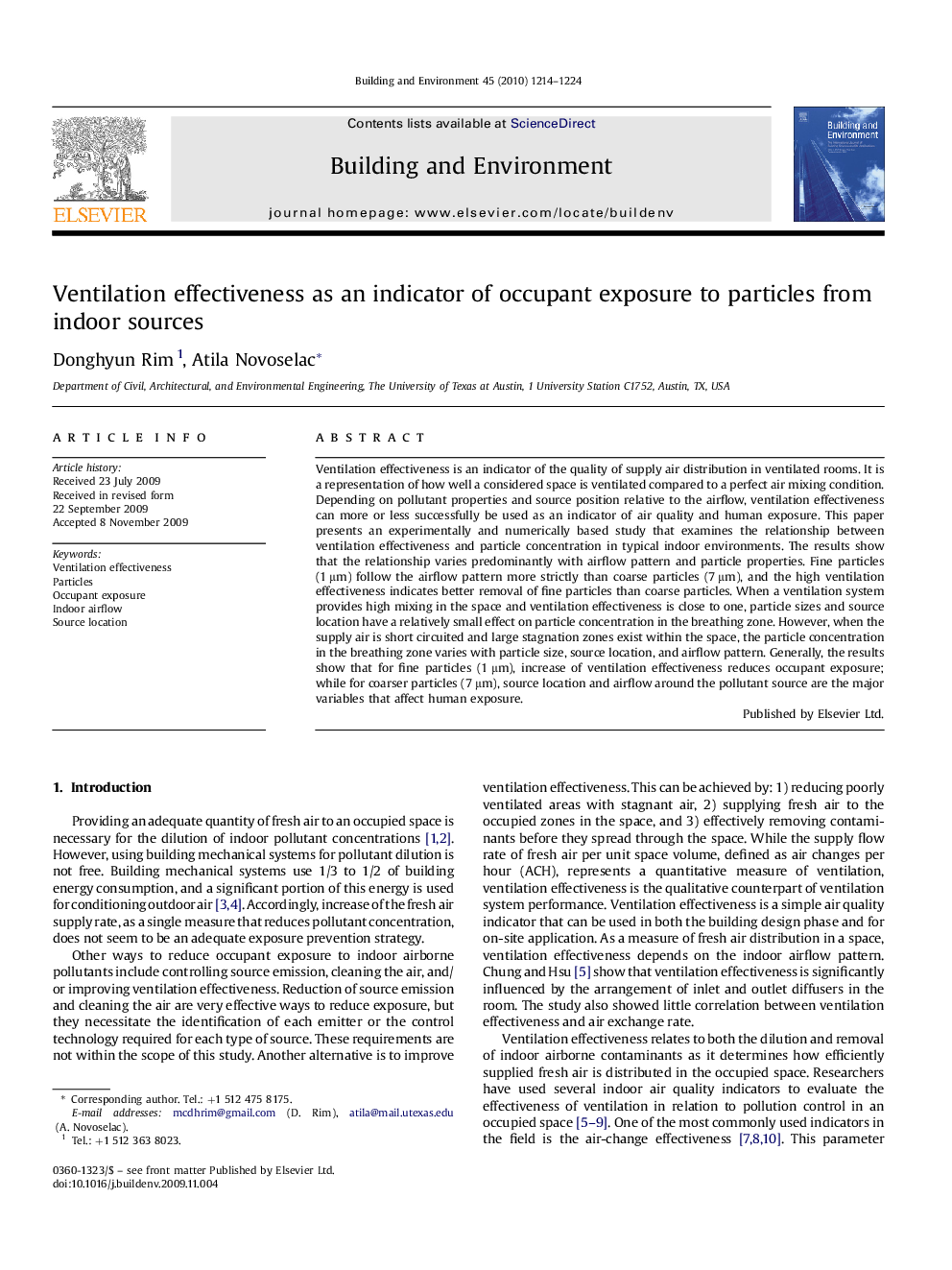| Article ID | Journal | Published Year | Pages | File Type |
|---|---|---|---|---|
| 248952 | Building and Environment | 2010 | 11 Pages |
Ventilation effectiveness is an indicator of the quality of supply air distribution in ventilated rooms. It is a representation of how well a considered space is ventilated compared to a perfect air mixing condition. Depending on pollutant properties and source position relative to the airflow, ventilation effectiveness can more or less successfully be used as an indicator of air quality and human exposure. This paper presents an experimentally and numerically based study that examines the relationship between ventilation effectiveness and particle concentration in typical indoor environments. The results show that the relationship varies predominantly with airflow pattern and particle properties. Fine particles (1 μm) follow the airflow pattern more strictly than coarse particles (7 μm), and the high ventilation effectiveness indicates better removal of fine particles than coarse particles. When a ventilation system provides high mixing in the space and ventilation effectiveness is close to one, particle sizes and source location have a relatively small effect on particle concentration in the breathing zone. However, when the supply air is short circuited and large stagnation zones exist within the space, the particle concentration in the breathing zone varies with particle size, source location, and airflow pattern. Generally, the results show that for fine particles (1 μm), increase of ventilation effectiveness reduces occupant exposure; while for coarser particles (7 μm), source location and airflow around the pollutant source are the major variables that affect human exposure.
